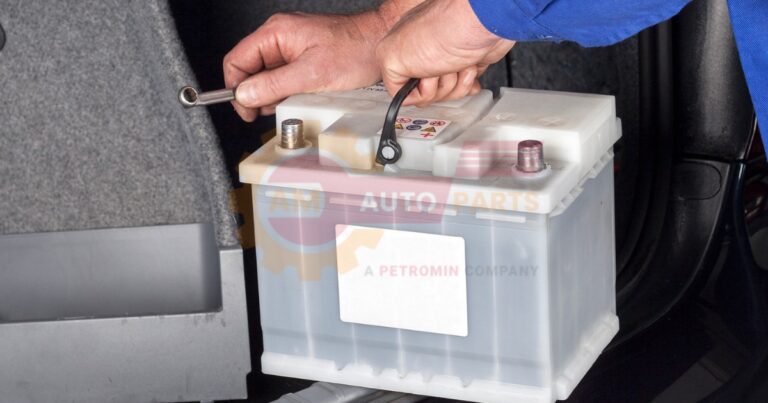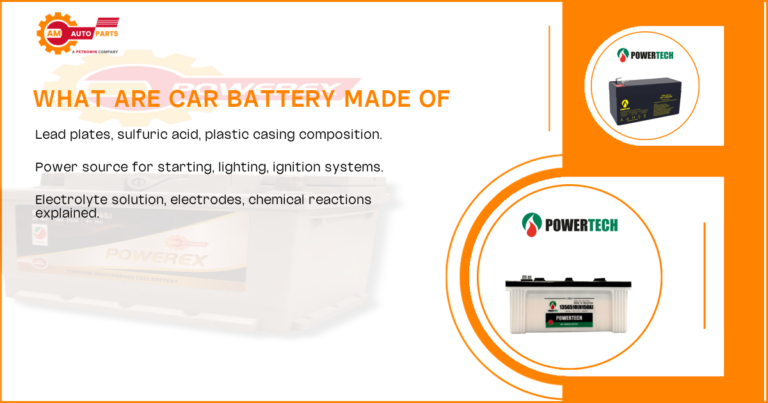Electric vehicles (EVs) are revolutionizing the way we think about transportation, offering a cleaner and more sustainable alternative to traditional gasoline-powered cars. However, one of the key concerns for EV owners is the degradation of the battery over time. Understanding the factors that contribute to battery wear and how it affects EV range and performance is crucial for maximizing the lifespan of your electric vehicle.
EV Battery Degradation and Wear
Factors Affecting Battery Life
Battery life in electric vehicles is influenced by a variety of factors. These include the chemistry of the battery, the conditions under which it is used, and the habits of the driver. For instance, lithium-ion batteries, which are commonly used in EVs, are sensitive to temperature extremes and charging practices.
- Battery Chemistry : Different types of batteries have varying lifespans.
- Usage Conditions : High temperatures and frequent fast charging can accelerate wear.
- Driver Habits : Regular deep discharges can reduce battery life.
Impact on EV Range and Performance
As an EV battery degrades, its ability to hold a charge diminishes, which directly impacts the vehicle’s range. This means that over time, an EV may not be able to travel as far on a single charge as it could when it was new.
- Reduced Range : Degradation leads to shorter travel distances.
- Performance Issues : A worn battery can affect acceleration and power.
- Increased Charging Frequency : More frequent charging sessions are needed.
Battery Capacity Loss Over Time
Battery capacity loss is a natural process that occurs as a battery ages. Most EV batteries are designed to retain a significant portion of their capacity over several years, but gradual loss is inevitable.
- Initial Capacity : New batteries have full capacity.
- Gradual Decline : Capacity decreases with each charge cycle.
- Long-Term Retention : Many retain 70% capacity after 12 years.
Causes of EV Battery Degradation
Temperature Extremes
Extreme temperatures, both hot and cold, can have a detrimental effect on battery health. High temperatures can accelerate chemical reactions within the battery, leading to faster degradation, while cold temperatures can reduce the battery’s efficiency.
- Heat Effects : Increases chemical reaction rates.
- Cold Effects : Reduces efficiency and range.
- Optimal Temperature : Maintaining moderate temperatures is key.
Charging Habits
How you charge your EV can significantly impact battery longevity. Frequent fast charging and charging to full capacity can accelerate wear.
- Fast Charging : Increases heat and stress on the battery.
- Full Charges : Can lead to over-stressing the battery.
- Partial Charging : Recommended for longer battery life.
High-Power Charging Effects
High-power charging stations offer convenience but can contribute to battery wear if used excessively. The rapid influx of energy can generate heat and stress the battery.
- Convenience vs. Wear : Balancing fast charging with battery health.
- Heat Generation : Rapid charging increases temperature.
- Use Sparingly : Reserve for long trips or emergencies.
Deep Discharge Cycles
Allowing the battery to discharge completely before recharging can shorten its lifespan. This practice puts additional strain on the battery cells.
- Strain on Cells : Deep discharges increase wear.
- Avoid Complete Drains : Recharge before reaching low levels.
- Maintain Mid-Level Charge : Ideal for longevity.
Measuring and Monitoring Battery Health
State of Health (SoH) Indicators
State of Health (SoH) is a measure of a battery’s current condition compared to its ideal state. Monitoring SoH can help predict when a battery might need replacement.
- SoH Metrics : Provides insight into battery condition.
- Predictive Maintenance : Helps plan for replacements.
- Regular Monitoring : Essential for optimal performance.
Battery Management Systems
Battery Management Systems (BMS) are crucial for maintaining battery health. They monitor and manage the charging and discharging processes to prevent damage.
- Charge Control : Ensures safe charging practices.
- Temperature Monitoring : Prevents overheating.
- Balancing Cells : Maintains uniform cell health.
AM Autoparts’ Battery Diagnostics Tools
AM Autoparts offers advanced diagnostic tools to help EV owners monitor their battery’s health. These tools provide detailed insights into battery performance and potential issues.
- Comprehensive Diagnostics : Detailed battery analysis.
- User-Friendly Tools : Easy for owners to use.
- Proactive Maintenance : Identifies issues early.
Strategies to Minimize EV Battery Wear
Optimal Charging Practices
Adopting optimal charging practices can significantly extend the life of your EV battery. This includes avoiding frequent fast charging and not charging to full capacity regularly.
- Avoid Full Charges : Charge to 80% for daily use.
- Limit Fast Charging : Use sparingly to reduce wear.
- Regular Charging : Maintain a consistent charge level.
Temperature Management
Managing the temperature of your EV battery is crucial for minimizing wear. This can be achieved through parking in shaded areas and using thermal management systems.
- Park in Shade : Reduces heat exposure.
- Use Thermal Systems : Keeps battery at optimal temperature.
- Avoid Extreme Conditions : Protects battery health.
Driving Habits for Battery Longevity
Your driving habits can also impact battery wear. Gentle acceleration and avoiding high speeds can help preserve battery life.
- Gentle Acceleration : Reduces strain on the battery.
- Avoid High Speeds : Conserves energy and reduces wear.
- Consistent Driving : Promotes battery health.
EV Range and Battery Loss Correlation
Initial vs. Long-Term Range Expectations
When purchasing an EV, it’s important to understand that the initial range may decrease over time due to battery degradation.
- Initial Range : Maximum distance when new.
- Long-Term Decline : Gradual reduction in range.
- Realistic Expectations : Plan for future range loss.
Factors Influencing Range Reduction
Several factors can influence the reduction in range, including driving conditions, temperature, and battery health.
- Driving Conditions : Terrain and speed affect range.
- Temperature Effects : Extreme temperatures reduce efficiency.
- Battery Health : Degradation impacts range.
Real-World Range Data Analysis
Analyzing real-world data can provide insights into how different factors affect EV range over time.
Factor | Impact on Range |
Temperature | High/Low reduces range |
Driving Speed | High speeds decrease range |
Battery Age | Older batteries have less range |
Battery Degradation Across Different EV Models
Comparison of Popular EV Batteries
Different EV models use different battery technologies, which can affect their degradation rates and overall performance.
- Tesla vs. Nissan : Different chemistries and cooling systems.
- Battery Lifespan : Varies by model and usage.
- Performance Metrics : Compare range and degradation.
Liquid vs. Air Cooling Systems
Cooling systems play a significant role in battery health. Liquid cooling is generally more effective than air cooling in maintaining optimal temperatures.
- Liquid Cooling : More efficient temperature control.
- Air Cooling : Simpler but less effective.
- Impact on Degradation : Better cooling reduces wear.
Chemistry Variations and Their Impact
The chemistry of a battery can influence its lifespan and performance. Common chemistries include lithium-ion, nickel-metal hydride, and solid-state.
- Lithium-Ion : Most common, good balance of performance.
- Nickel-Metal Hydride : Less common, longer lifespan.
- Solid-State : Emerging technology with potential benefits.
Future Technologies Addressing Battery Wear
Solid-State Batteries
Solid-state batteries are an emerging technology that promises to reduce battery wear and increase energy density.
- Higher Energy Density : More power in a smaller package.
- Reduced Wear : Less prone to degradation.
- Longer Lifespan : Potential for extended battery life.
Advanced Thermal Management
Advanced thermal management systems are being developed to better regulate battery temperatures and reduce wear.
- Improved Cooling : More efficient temperature control.
- Reduced Degradation : Maintains optimal conditions.
- Enhanced Performance : Consistent battery health.
Self-Healing Battery Materials
Self-healing materials are being researched to address battery wear by repairing damage at the molecular level.
- Damage Repair : Extends battery life.
- Innovative Materials : New approaches to longevity.
- Potential Benefits : Longer-lasting batteries.
Economic Implications of Battery Degradation
Resale Value Considerations
Battery degradation can impact the resale value of an EV. Buyers are often concerned about the remaining battery life.
- Depreciation : Faster with significant degradation.
- Buyer Concerns : Battery health affects value.
- Maintenance Records : Can improve resale prospects.
Battery Replacement Costs
Replacing an EV battery can be expensive, making it important to consider the potential costs when purchasing an EV.
- High Costs : Significant investment for replacement.
- Warranty Coverage : Often covers initial years.
- Cost-Benefit Analysis : Weigh replacement vs. new purchase.
Warranty Coverage for Battery Wear
Most EV manufacturers offer warranties that cover battery wear for a certain period or mileage.
- Standard Warranties : Typically 8 years or 100,000 miles.
- Coverage Details : Varies by manufacturer.
- Peace of Mind : Protects against early failure.
Environmental Impact of EV Battery Degradation
Recycling and Second-Life Applications
Recycling and repurposing EV batteries can mitigate the environmental impact of battery degradation. Second-life applications give batteries a new purpose after their automotive life.
- Recycling Programs : Recover valuable materials.
- Second-Life Uses : Energy storage and other applications.
- Sustainability Efforts : Reduce environmental footprint.
Sustainability of Battery Production
The production of EV batteries has environmental implications, but advancements in sustainable practices are being made.
- Resource Extraction : Environmental concerns with mining.
- Sustainable Practices : Reducing production impact.
- Future Innovations : Aim for greener production methods.
FAQs
What percentage of battery degradation is considered normal for EVs?
A normal rate of battery degradation for EVs is about 2-3% per year, depending on usage and environmental factors. After 12 years, many EV batteries retain around 70% of their original capacity. Regular maintenance and optimal usage can help maintain battery health within this range.
Can EV battery degradation be reversed?
EV battery degradation cannot be fully reversed, but certain measures can slow down the process. Regular maintenance, optimal charging practices, and temperature management can help preserve battery health. Emerging technologies may offer future solutions to mitigate degradation.
How long do EV batteries typically last?
EV batteries typically last between 8 to 15 years, depending on usage and environmental conditions. Most manufacturers offer warranties that cover the battery for at least 8 years or 100,000 miles. Proper maintenance and optimal charging practices can extend the battery’s lifespan.






